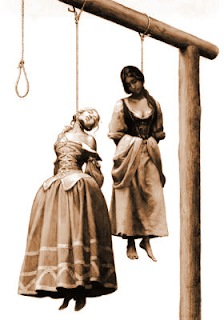Our Twitter-in-Chief invoked a common expression today, referring to a witch hunt. Many of us use the term to mean an unfair investigation.
In a way, this usage is correct—but we can learn much from the most famous witch hunt in the annals of legal history. No, it wasn’t the Salem Trials.
It was the Pendle Witch Trial of 1612.
King James had an intense paranoia that Catholics in his kingdom were plotting a coup in behalf of the Pope. The king stirred fear of Catholics among his subjects.
That brings us to Pendle, a town that the king had identified as being filled with subversives.
A young girl, Alizon, was a street beggar. After her begging was rebuffed, she said unkind things to a pedestrian. The man suddenly died.
Being Catholic, she was charged with bewitching him to death.
The magistrate went to Alizon’s home on Good Friday, hearing rumors that these Catholics were witches. Jennet Pendle, a 9 year-old girl, substantiated the witchcraft charges against her family, and another family with whom the Pendles were feuding.
Little Jennet was the King’s star witness, calmly and convincingly testifying that her mother and sisters and brother and neighbors were witches during a two-day trial.
As a result of her testimony, ten defendants were executed upon conviction of witchcraft.
So, why is this the most important legal case involving witches? That’s because English and American courts (and likely others) adopted a rule barring the testimony of children under 14 years of age on grounds of inherent unreliability.
Thanks to Prof. Ronald Hutton from the University of Bristol for this outstanding research.
Your homework: Consider parallels and differences to today’s tweet about witch hunts.

No comments:
Post a Comment